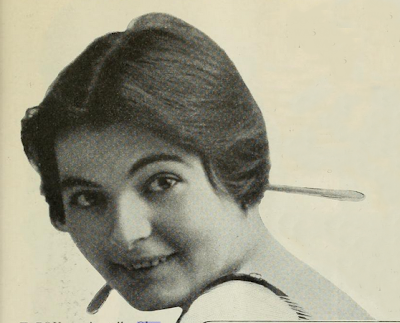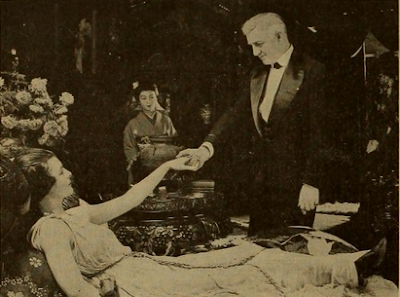A music student turned actress turned lawyer? As odd as it may sound, that's the journey of Anushka Zacsek, better known to silent film fans as Olga Grey.
Although her parents were Hungarian, Grey grew up and was educated in New York. Her father pushed her to pursue a career in music, specifically encouraging her to become a violinist. She had done some stage acting, but (as she told the fan magazines at the time) she impulsively decided that she wanted to pursue a career in film when she took a trip to the West Coast in 1915.
She signed with Triangle and found herself as an extra in several of D.W. Griffith's films. She had an uncredited role in "The Birth of a Nation," and also played the part of Mary Magdalene in the Christ narrative of "Intolerance." Though she never achieved the same kind of prominence that other Griffith ingenues would achieve (e.g. Mary Pickford, Lillian Gish, Mae Marsh), she found "important roles" in Douglas Fairbanks vehicles ("Double Trouble") and Mae Marsh vehicles ("The Wild Girl of the Sierras") which won her praise from critics.
Still from "Fanatics"
Grey, like Theda Bara, used her exotic looks to her advantage, often playing exotic, vamp-like characters. Occasionally she found roles that allowed her to show more range, like the role of Lola Monroe in "Fanatics." Although she worked steadily, finding work with multiple production companies, by 1920 she had retired from the screen.
According to an interview with the Associated Press in 1935, when Grey left Hollywood she returned to the stage. She toured Europe, taking on the roles she never got to pursue on screen, including Anna Karenina and Judith of Bethulia. She began to dabble in films again when she returned to the US, and launched a theater in Los Angeles. One night, she confided in a lawyer friend that she was tired of acting. He urged her to study law and she she took his advice. She was admitted to the bar in 1932.
When she was interviewed by Photoplay Magazine in 1917, Grey said that she had changed her name from Anna Zacsek to Olga Grey while she was in New York simply because it made life a little easier. Although the name change probably wasn't necessary (think of the actresses who came after her whose names were just as exotic as their personas), it gave her the opportunity to assume a new (or, rather, old) persona when she retired from the screen. No longer was she Olga Grey the silent film siren -- she was now Anna Zacsek the attorney.
In fact, for a period, she had the distinction of being one of only two practicing women attorneys located in Los Angeles. Not only that, she was also the defense attorney for three of the gang members charged in the Sleepy Lagoon Murder trial of 1942 (the trial cited as one of the sparks that led to the Zoot Suit Riots of 1943). Among her clients were Henry Leyvan, Victor Segobia and Edward Grandpre, and by all accounts, she was a strong and articulate presence in the courtroom.
Although Grey found herself, to a certain degree, back in the spotlight, she never regretted leaving the stage or film behind her. She told the AP, "Now I'm supremely happy. Look at the excitement this gives me. The drama of it. And no make-believe. Do you think any of those roles I played ever gave me what this is giving me -- to know that nothing but myself stands between the happiness and mystery of a human being?"






No comments:
Post a Comment